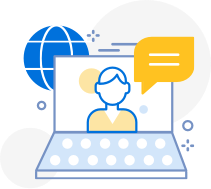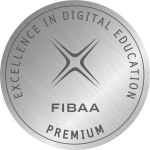In companies, self-organized learning is becoming increasingly important in personnel development, and executives also use online learning sources to continue their education and remain competitive. The possibility of having access to the learning content at any time and from any place without physical instruction through e-learning is undoubtedly becoming more and more popular.
What is Self-Directed Learning?
Self-directed learning or self-organized learning describes a process in which the individual takes the initiative to diagnose their learning needs, formulate learning goals, identify resources for learning, select and implement appropriate learning strategies, and evaluate learning outcomes. Whether privately motivated or at work.
As mentioned, self-directed learning is a learning process in which the learner takes control of the learning, with or without the help of others. According to research, the future of e-learning will be characterized by more user autonomy and fewer prescribed learning paths, leading to more integrated, searchable and cataloged systems.
Self-directed learning at self-determined study times is an important trend in the advancement of the learning environment and learning methods in general, due to its unique characteristics and the separation of physical and social experiences.
There are many motivating factors for all self-directed learning in the e-learning environment. This may be a reason why the instructional design, the learning formats, are so popular. This in turn may be the reason why e-learning is so popular with today’s learners and drives learning activities.
It is assumed that traditional learning environments will change more and more against the background that informal learning tends to increase learning motivation.
motivating factors
Four key motivating factors have been identified in the context of self-directed learning:
- freedom of choice,
- Interest,
- control and
- Engagement.
When designing e-learning learning formats for self-directed learning, it is important to keep in mind the simplicity of the technological links to the learning outcomes, the design features and the online support structures.
Then comes the motivation of the learner. What is the natural instinct to learn, this is that
- Why of the learner.
- Why are you here,
- why are you in your course,
- why are they in your course, and what is their motivation when it comes to learning and when it comes to getting information you want them to get.
In addition, there are certain factors that can affect a learner’s ability to be self-directed learners. These factors include the teachers themselves, the mentors, the resources that are available and, particularly in the case of adult learning partners, the various responsibilities that the learner has in their life.
For example, a student who is not in the workforce often does not have many other commitments in life and can therefore focus solely on learning, as opposed to adult adults like us who have work and in some cases family and children and other commitments have, all of which affect our ability to be self-directed or have a high capacity for self-direction to fully achieve goals. And we’ll see that these different things can have different effects.
So, human and material resources affect not only motivation and management, as you saw in the previous scheme, but also memory and motivation. All of these can be keys that affect a learner positively or negatively.
And as a mentor or trainer, we need to be aware of this because we play an important role in the success of our learners.
Conditions for self-directed learning
First condition
The first requirement, then, is a clear understanding that education is the responsibility of the student.
Second condition
Unlimited opportunities to play, pursue and explore your interests. Unlimited time, not just an hour a day, but unlimited time. It takes time to try different things. It takes time to get bored. Think about ways to beat boredom, and don’t interrupt that with bells that keep telling people what to do and expect them to really get passionate about it.
Opportunity to play with the tools of culture, to really play with the tools of culture. In the hunter-gatherer culture, these would be bows and arrows, knives, fire, and digging sticks. In our culture, the main tool is the use of computers. It’s not surprising that computers all over us like to play with computers. They know it in their bones. That’s the culture’s tool, and they have to spend their time with it. In a way, it becomes an extension of her own body.
Stages of self-directed learning
According to Malcon Knowles , who has studied the theories of adult learning, self-directed learning is a process in which the individual takes control of their own learning. They diagnose their learning needs, formulate learning goals, determine the resources for learning, implement learning strategies and evaluate their learning. There are five phases of learning:
- planning
- Learn
- evaluation
- return message
- reflection
- planning
Planning for learning involves setting a goal that depends on self-efficacy, that is, on the individual’s belief that he or she can accomplish a task. Self-efficacy, in turn, depends on personal, social, and environmental factors. In addition, motivation also affects a person’s goal setting.
The actual learning
Most learners are visual learners. In addition, learning also depends on the learning strategy, which can be superficial, with students resorting to street learning, or profound, with students having a very good understanding of the learning objectives, learning forms, methods, necessary skills and concepts, or a Strategy in which students prepare for the test.
evaluation
After learning, it is important to evaluate your own performance. Self-assessment is an ongoing part of the learning process. Most capable learners assess themselves accurately, while underperformers tend to overestimate their performance.
return message
Feedback in the learning process means giving the learner information so that they can improve their learning.
reflection
Finally, the learner has to think about the whole experience, ie what happened, what thoughts and feelings he had during the whole experience. What was good and bad about the experience, and what could be done next if the situation arises again?
Implementation strategy for self-directed learning
A. Scheduling a self-directed learning session
What is better? Online learning or physical presence learning?
Both: The so-called blended learning combines traditional face-to-face training and virtual learning. This method is very topical and offers learners considerably more flexibility than traditional face-to-face seminars.
Teachers should be trained in workshops, through the exchange of literature and informal discussions, and course participants should be made aware of the high relevance of self-directed learning.
choice of topic
The targeted search and selection of topics is very important in self-directed learning. It should be feasible to integrate knowledge, terms and concepts within the time frame. Therefore, we should always choose our topic with care.
B. Conducting a session
In the first contact session, the topic is discussed with the course participants. They choose the learning goals, the form of learning, the use of learning content, the learning materials and the milestones that they want to achieve during the attendance phase. During this time, the lecturer clarifies the students’ doubts and acts more as a learning guide.
In the second contact session, the students make their own contribution and perform a service. This output can take the form of answers or mind maps, followed by a grade from the instructor, or a self or peer assessment.
Then comes the feedback. Feedback from teachers or students can also take the form of mutual feedback (peer feedback).
How can self-directed learning be implemented in existing classes?
Teach students how to set and manage their goals. You can start with small, easy-to-achieve goals to understand the concept of goal setting. Later, they can then set long-term goals.
Have students enroll themselves in groups so they can base their choices on similar learning goals or areas of interest, complementary specializations and skills, or appropriate learning strategies. This increases the intrinsic motivation of the individual group members and increases the chances of successful teamwork.
Give your students a voice. Your classroom should provide a stage where students feel comfortable and can express their opinions. The students feel empowered and part of the class community. This strengthens their self-confidence and makes them independent.
Instead of giving students a detailed plan, study, or procedure, give them a map of the destination and let them decide how best to get there.
Guide students in choosing their own learning resources, using the Wikipedia encyclopedia, and other tools and apps by allowing them to choose the strategy that best suits their learning needs and autonomy. Have students complete 11 evaluations to reflect on their progress and identify the skills they need to develop further to enhance their learning.
If we give the students time and space to support them in fulfilling their tasks and make suggestions to become aware of their own knowledge and thinking, the students’ personal responsibility, their “learning by doing” and learning success increases. Encourage an “I can” attitude. When students are confronted with disappointments, you should teach them to analyze them and see the bigger picture. This not only encourages their analytical skills but also gives them more responsibility for their own learning.
Why should you encourage self-directed learning?
Learners learn better when they can control the flow of their experiences. Self-directed learning leads to a high degree of personal responsibility and independence and prepares you well for the complex requirements of today’s working world.
Dimensions of the ability of self-directed learning
This model is not only about self-directed learning, but also the ability to self-directed learning and how well a learner is able to direct themselves. Various dimensions are discussed here: The
– How
– How well
– Because and why
of the learner.
Management (How)
The first dimension is management, ie how well a learner can manage all the things they have to do and how many different classes and courses, schedules and times they have to juggle. Some learners are good at it, some are not. All of this affects the learner’s ability to self-direct. So this is the management level of this model.
Surveillance (How Good)
Monitoring and the extent to which a learner is aware of how well they are achieving their goals also plays an important role. This is the ability to evaluate yourself. This is an important key of adult learning theory, which emphasizes less independence from assessment and more inner reflection and the ability to identify what needs to be done and how well it was done in order to improve oneself. So this is the monitoring aspect of the self-directed learning model.
Memories and Lifelong Learning (Because and Why)
A learner’s experiences influence their ability to be self-directed learners through what they experienced as a child, the type of learning experiences they had prior to their life circumstances, their resources or lack thereof. All of these things are the cause. The learner brings these things with him and they influence his ability to learn autonomously.
How can this model be applied in a business context?
In the roles of teacher, trainer or mentor in the company, you should have a strong influence on your learners in order to guide, monitor, motivate them and also process their learning successes properly.
It is very useful to plan with staff, have meetings and mentoring sessions, and make sure they are processing learning content correctly, that they are using the right managerial skills to be successful, that they have access to the right information. All of these things are central to an instructor.
A trainer also has a major impact in setting the stage for a learner. When a learner understands their goals, it is easier to focus on what they need to do. When a learner understands the assessment criteria, they can better control themselves. And when a learner understands the syllabus and what’s due, when, where, and how, they can better balance that with their own responsibilities and all the other things they need to do.
All of these things are very important for a learner, especially an adult learner with multiple responsibilities, to be able to plan effectively and also be able to process the transformation at appropriate time intervals so that the information makes sense.









